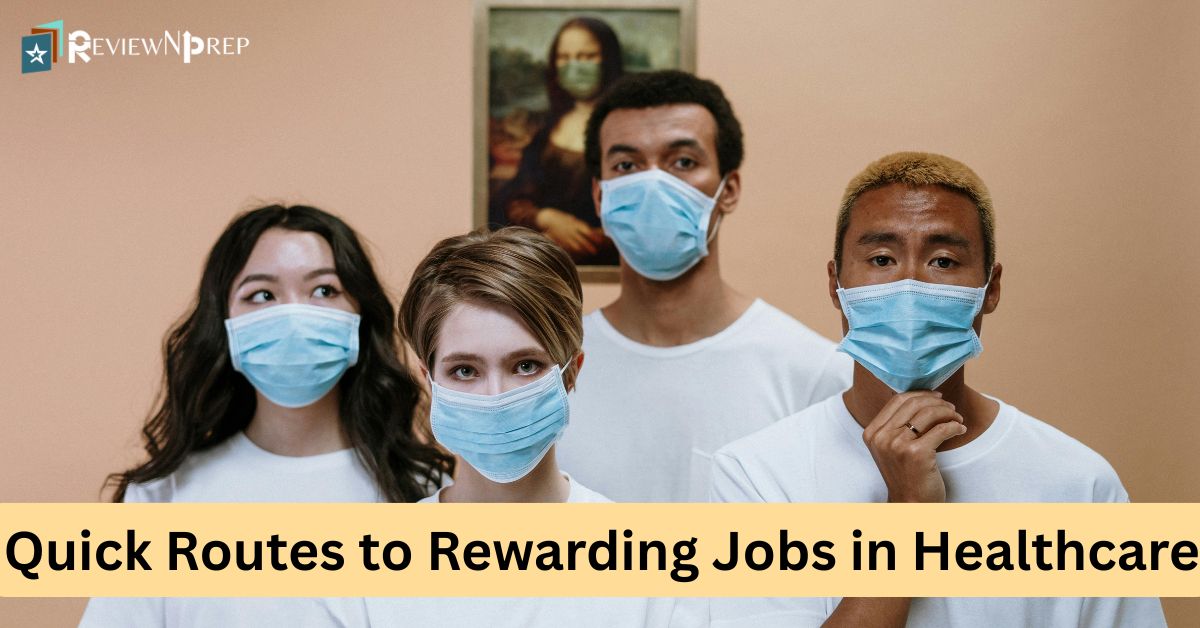Here’s something that might surprise you: closing healthcare worker shortages could add $1.1 trillion to the global economy while eliminating 7% of the world’s disease burden. That’s not just impressive—it’s transformative. Yet behind these McKinsey figures lies a more immediate reality: over 193,000 nursing openings are projected annually through 2032 in the U.S. alone.
But here’s where it gets interesting. While traditional thinking might suggest we’re facing an insurmountable crisis, the data tells a different story. Accelerated nursing programs have nearly doubled their graduates between 2013 and 2023, adding about 8,000 new nurses annually; which demonstrates the need for more online ABSN program options. These aren’t quick fixes either; they’re proving to be some of the most effective pathways into healthcare careers we’ve seen.
When Numbers Tell the Story
The scale of what we’re dealing with becomes clear when you look at the projections. The National Center for Health Workforce Analysis forecasts a shortage of 78,610 full-time equivalent registered nurses by 2025. That’s not a distant problem—it’s happening now.
Globally, the picture’s equally telling. The World Health Organization reports that while nursing workforce grew from 27.9 million in 2018 to 29.8 million in 2023, there’s a massive imbalance. About 78% of the world’s nurses work in countries representing just 49% of the global population. Think about that for a moment—the distribution isn’t matching the need.
What makes this particularly urgent is the retirement wave approaching. Over 25% of current registered nurses plan to retire within five years, creating an even larger gap just as demand increases. Yet employment for nurses is projected to grow 6% from 2022 to 2032, outpacing most other professions.
This convergence creates something remarkable: genuine opportunity. These aren’t just statistics about problems—they represent openings for people ready to enter a profession that’s both personally meaningful and professionally secure. The question isn’t whether jobs will exist; it’s whether enough qualified people will step up to fill them.
The Fast Track That Actually Works
You might assume that compressing four years of nursing education into 12-24 months would compromise quality. The data says something else and a substantially different something!
Accelerated Bachelor of Science in Nursing (ABSN) students have a 94.0% NCLEX-RN pass rate – whereas traditional student pass rate is 85.7%. This is no minor difference; that’s a huge gap where the accelerated approach is outperforming. Furthermore, ABSN attrition rates are 10-15% as opposed to the traditional attrition rate of 20-30%.
Why is this? It has to do with who these students are and their way of learning. Accelerated nursing students are usually students with degrees already, which means they are bringing educational experience and developed study habits that have already been validated at the university level.
Why does this happen? The answer lies in who these students are and how they approach learning. Accelerated nursing students typically arrive with existing bachelor’s degrees, bringing educational experience and study skills already proven at university level. They’re often career changers—people who’ve made deliberate decisions about their professional direction rather than following a default path.
There’s something else worth noting here. Faculty consistently report that accelerated students show greater engagement, ask more challenging questions, and approach clinical experiences with unusual enthusiasm. They’re not afraid to push back when something doesn’t make sense—a quality that serves them well in healthcare settings.
Innovation in teaching methods has amplified these advantages. Purdue Global School of Nursing saw a 10% increase in licensure examination pass rates after implementing virtual reality technology in their curriculum. These programs aren’t just faster; they’re often more technologically advanced than their traditional counterparts.
The intensive model works because it eliminates dead time. Students focus exclusively on nursing coursework since general education requirements are already complete. This concentrated approach actually enhances retention—when you’re fully immersed in material, connections form more readily than in spread-out learning.
Show Me the Money (and Security)
Let’s talk numbers that matter to your bank account. BSN graduates typically earn around $92,000 annually, about $17,000 more than those with associate degrees in nursing. The median annual wage for registered nurses hit $86,070 in May 2023, with the top 10% earning over $132,680.
Here’s where it gets really interesting—and this is something people don’t always calculate properly. Over a 30-year career, the salary gap between BSN and ADN nurses exceeds half a million dollars. That’s not accounting for advancement opportunities, which tend to favor BSN graduates significantly.
But salary is just part of the picture. Job security in nursing approaches what economists call “recession-proof.” Healthcare needs don’t disappear during economic downturns; if anything, they intensify. The 6% projected growth rate for nursing positions, combined with the upcoming retirement wave, creates what’s essentially a seller’s market for qualified nurses.
The economics of accelerated programs make sense from a personal finance perspective too. While per-semester costs might be higher, you’re earning sooner and avoiding the opportunity cost of four years out of the workforce. Most accelerated students break even on their educational investment within two to three years of graduation.
There’s also the broader economic context to consider. Healthcare jobs typically offer comprehensive benefits packages—health insurance, retirement contributions, paid time off, and continuing education support. In an era when many industries are reducing benefits, healthcare maintains these comprehensive packages because competition for qualified staff is intense.
Where This All Leads
Nursing isn’t what it used to be, and that’s largely positive news for career advancement. The profession has evolved into something with remarkable breadth and depth of opportunity.
Consider the leadership track alone. BSN preparation opens doors to charge nurse positions, clinical management roles, and eventually Chief Nursing Officer positions. Hospitals with higher percentages of BSN nurses consistently show better patient outcomes, including reduced readmission rates and lower surgical mortality. Healthcare executives know this, which is why they actively recruit BSN graduates for advancement opportunities.
The specialization options might surprise you if you’re thinking of nursing in traditional terms:
- Critical care and emergency medicine
- Pediatric and neonatal specialties
- Healthcare informatics and technology
- Quality improvement and patient safety
- Healthcare administration and policy
- Education and research
- Telehealth and remote patient monitoring
Each of these areas offers distinct career paths with their own advancement opportunities and salary ranges. Some nurses become entrepreneurs, starting healthcare consulting firms or developing medical devices. Others move into pharmaceutical companies or healthcare technology firms.
There’s also the academic angle worth considering. With nursing faculty vacancy rates at 7.8%, and 79.8% of those vacancies requiring doctoral degrees, there’s a clear pathway for BSN graduates who want to eventually teach. Many accelerated programs specifically encourage this progression, seeing their graduates as future faculty members.
What strikes me as particularly compelling about nursing career trajectories is their resilience. Healthcare needs aren’t going away, and they’re becoming more complex, not less. An aging population, chronic disease management, and healthcare technology advancement all create expanding opportunities for nurses with strong educational foundations.
The accelerated BSN route doesn’t just get you into nursing faster—it positions you for the kind of nursing career that adapts and grows with industry changes.
The Bigger Picture
When you step back and look at accelerated nursing programs through both individual and societal lenses, something remarkable emerges. These aren’t just educational shortcuts—they’re strategic responses to genuine workforce needs that happen to align perfectly with career-change aspirations.
The McKinsey projection about $1.1 trillion in economic value isn’t abstract. It represents real improvements in health outcomes, reduced healthcare costs, and more efficient care delivery. When hospitals have adequate nursing staff, patients recover faster, complications decrease, and the entire system functions better.
But perhaps what’s most compelling is how these programs demonstrate that career changes don’t have to take forever or compromise quality. The data consistently shows that motivated adults with existing educational foundations can master complex professional skills in concentrated timeframes—and often perform better than those following traditional paths.
The nursing shortage represents one of those rare situations where individual opportunity and societal need align almost perfectly. For people ready to invest intensively in their professional future, accelerated nursing programs offer a pathway that’s both personally rewarding and economically sound. The numbers don’t lie, and they point toward a profession that’s not just stable, but essential.
Further Reading:
Tech Career Path: Software Development vs Cybersecurity vs Data Science
Building a Successful Medical Career: Essential Tips for Aspiring Doctors

